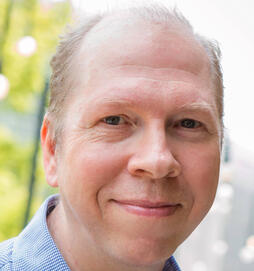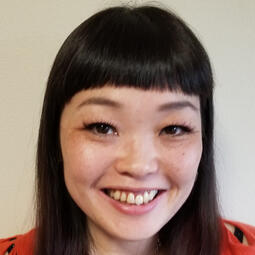
Welcome to The Temple of the Jewel Dragon - where ancient wisdom meets modern technology with the gentlest of touches. Whether you're a thoughtful seeker or a soft-hearted skeptic, we've prepared a quiet corner in our digital sanctuary just for you. Simply bring your presence; moments of insight may whisper to you or not-either way, you're welcome here. Float into our Metaverse temple for the full immersive experience, or if your VR headset is taking a peaceful respite, try The Dragon Breath - our soothing analogue beginning that asks nothing more than your breath and a moment of tender attention.
REAL WORLD LOCATION
Located in Kanayama Town, Gero City, Gyokuryu-ji Temple is a Rinzai Zen temple of the Myoshin-ji school. According to tradition, the monk Gyoki founded it in the Nara period (710–794). Among its prized possessions is a very rare seated Buddha statue, its leg elegantly outstretched, created between the late Heian period (794-1185) and the early Kamakura period (1185-1333). Known as the “Maple Temple,” November is its most dazzling month when over 100 maples turn vibrant red. The temple’s interior sliding doors are exquisitely decorated with dragons and regional motifs. HTC LLC generously granted us funding, allowing the temple to be accessible on their Viverse platform. Jump into the VR experience right now!
THE DRAGON BREATH
The power of serotonin
The guardians that grace the sliding doors at Gyokuryu-ji are more than mere decoration; their presence is echoed in Abbot Sasaki’s signature meditation technique—“The Dragon Breath.”This method leverages serotonin elevation to achieve stress reduction, employing deep, calm breathing to foster mental stability. In contrast to our adrenaline-fuelled modern lifestyles, the abbot advocates a serotonin-focused approach that brings balance and peace.The method is disarmingly simple—deep inhales, long exhales. No incense, no chanting, no need for enlightenment to strike like lightning. Just breath, moving in and out, as steady as a temple bell. I’m told it can be practised anywhere, even wedged between strangers on a commuter train. Abbot Sasaki assures me that twenty minutes a day works wonders, but even a few breaths can shift the mood of a moment.

Practicing the Dragon Breath
Here are the simple steps to do a session of Dragon Breathing:
Find a comfortable position, if you can, sit on the floor with crossed legs
Set a timer, ten minutes is a good starting point
Rest your hands in your lap
Close your eyes
Clear your thoughts, but don't fight them if they keep popping up
Take a long, deep, breath through the nose
Exhale through your mouth, while counting slowly to ten
Take another deep breath, and so forth
When the timer chimes, return slowly to normal consciousness
THE PHILOSOPHY

Joseph Campbell, the renowned professor and researcher of world mythology, once recounted a tale of a Western philosopher at a conference on religion in Japan. Perplexed, the Westerner asked a Shinto priest, "I don't get your ideology. I don't get your theology." The priest, after a moment's contemplation, replied simply, "I think we don't have ideology. We don't have theology. We dance." This exchange also encapsulates the essence of Zen, a non-philosophy that defies definition and doctrine. Zenvacation, isn't about adhering to rigid beliefs or complex ideologies. It's about being. It's the space between breaths, the pause between thoughts, the moment when the mind stops chattering and the heart starts listening. At the Temple of the Jewel Dragon (玉龍寺), you're invited to dance to the rhythm of existence, free from the constraints of dogma.
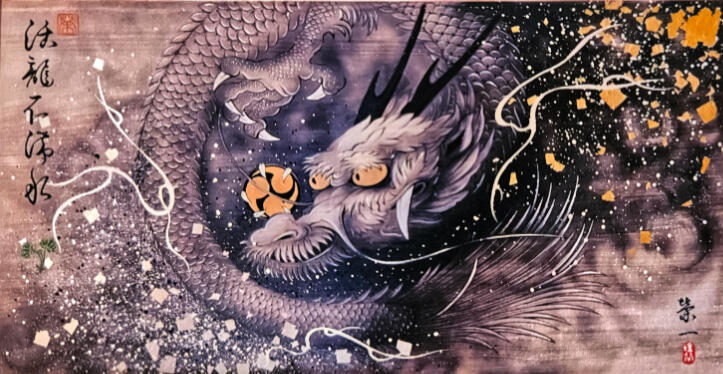
INSIGHT BY EXPERIENCE
The temple is a sanctuary for those seeking freedom from the world's incessant ideological chatter. Here, under the watchful eyes of jeweled dragons and autumn-hued maples, you're free to simply be. In the real world version, you can participate in temple chores, soak in nearby hot springs, or just exist in the sacred space. The Dragon Breath is part of this experience. Taking part in daily temple life lets you truly immerse yourself to the fullest in the Zen way.
THE AUDIO DRAMA
And so, dear traveler, we arrive at the heart of the matter. Within this virtual temple, you’ll stumble across two voices: one belonging to a curious visitor, the other to a rather enigmatic resident—yours truly. Some of what you’ll hear might raise an eyebrow, or even both. But don’t be alarmed; that’s par for the course in Zen.You see, Zen is a bit of a trickster. It won’t hand you tidy answers on a lacquered tray. Instead, it tosses questions your way and waits, serenely, while you puzzle things out for yourself. Try too hard to “solve” Zen, and you’ll find it slips through your fingers like so much temple incense. In Rinzai Zen—yes, this very temple’s flavor of Zen—the master’s advice is simple: just experience the world, sit with it, and let enlightenment sneak up on you when you least expect it. Chase it, and it’ll vanish faster than a broom-swept leaf in the wind. As Abbot Sasaki is fond of saying, enlightenment can’t be forced. The more you strain, the further it floats.Japanese Zen, borrowing a few clever tricks from its Chinese Chan ancestors, loves to turn the ordinary—sweeping, raking, watching a leaf fall—into the extraordinary. Which reminds me: let me share a tale of someone who found enlightenment in a way that fits Rinzai Zen like a well-worn sandal.
THE WISDOM OF IMPERFECTION
Picture, if you will, a devoted monk armed with a broom and a sense of purpose that would put even the most enthusiastic spring-cleaner to shame. Day after day, he swept the temple garden until it was so immaculate you could eat your sushi off it (though the abbot rather frowned upon that sort of thing).One fine morning, the monk stood back to admire his handiwork: not a leaf in sight, not a twig out of place, not even a rebellious acorn. Perfection. The universe, it seemed, was finally in order.And then—because the universe has a wicked sense of timing—a single leaf, with all the grace of a ballerina and the subtlety of a tax inspector, pirouetted down from the tree and landed smack in the middle of the spotless path.The monk stared. The leaf stared back (insofar as leaves are able). And in that moment, he was struck—not by the urge to sweep again, but by a flash of enlightenment. Perfection, he realised, is terribly overrated. The world, much like his garden, is always just one leaf away from chaos. And that, oddly enough, is what makes it rather wonderful.So, the next time you’re striving for spotless order, remember the monk and his leaf: sometimes, it’s the tiny imperfections that let a little wisdom flutter in.
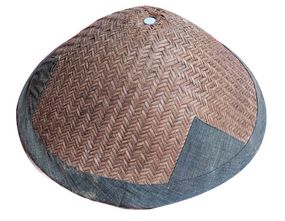
To illustrate how the philosophy of the temple works, here is a daily schedule. Through working in a meditative state, you'll slowly deepen your awareness of the world. And yes, you are welcome visit to do this yourself! But here is a bonus - thanks to Viverse, you can step into the temple right from your home. :)
| Time | Activity | Content |
|---|---|---|
| 6:00 AM | Morning Service (Chōka) | Chanting (optional) |
| 7:00 AM | Zazen | Seated meditation |
| 8:00 AM | Shukuza | Breakfast |
| 9:00 AM | Samu | Temple chores |
| 10:00 AM | Sarei | Tea time |
| 11:00 AM | Samu | Temple chores |
| 11:30 AM | Saiza | Lunch, rest |
| 01:30 PM | Samu | Temple chores |
| 03:00 PM | Sarei | Tea time |
| 03:30 PM | Kaiyoku | Bathing |
| 05:00 PM | Yakuseki | Dinner |
| 06:00 PM | Zazen | Seated meditation |
| 07:00 PM | Free time | Chat with abbot |
THE VR TEMPLE EXPERIENCE


Splendid on VR headset, PC will do nicely. :)
Press V on PC for easy navigation.
Sorry, not iOS compatible.
How to View on Meta Quest or equivalent headset
- Start the Meta Quest/default browser in the headset
- URL: dagonbreath.site
- Click the "VR" button
- Click the "Step Inside" button here above
- Click the "Got It" button to close keyboard shortcut screen
- Click the VR goggles icon at top of the screen
Find the audio drama spots in the VR temple
Simply walk and stop in these spots
In front of the Buddha in the main hall
In front of the small shrine in the garden
In front of the Buddha in the external world (teleport from side room)
FEATURES
* Designed for both flat screen enthusiasts and VR headset aficionados, though if you fancy the feeling of being in the temple without the inconvenience of airfare or jetlag, the VR option is decidedly superior.* The actual temple abbot has graciously approved our digital rendition, seemingly unfazed by our audacity to recreate sacred grounds. He welcomes you to visit the real temple in Gero City, Japan, where presumably the floors don't occasionally glitch.* You'll be accompanied by audio guidance featuring a student from England who, with characteristic British understatement, encounters an invisible guardian-because visible guardians would be far too straightforward.* Feel free to wander between temple and garden with the same mild disappointment you'd experience switching between BBC channels on a Sunday afternoon.* Visit a special room housing the temple's main treasure: a Buddha statue with one pendant leg. Marvel at it from all angles while pretending to understand its profound significance as the audio drama drones on.* PC users: If you insist on viewing through a flat screen, we recommend pressing V for first-person perspective. Much like British cuisine, it's not pretty, but it gets the job done.* For the full experience, use a Meta Quest 3 or better. After all, why experience partial digital enlightenment when you can have the complete package for just several hundred pounds (or dollars)?* VR headset users must first escape the keyboard guidance screen (much like escaping small talk at a dinner party) and click the VR goggles icon at the top-subtle, just like our humor.* Set in autumn evening, complete with authentic Japanese cricket sounds, because nothing says "immersive experience" quite like digital insects that won't actually invade your home.* Try the Dragon Breath meditation technique while in VR-an opportunity to look utterly ridiculous in your living room while feeling smugly spiritual.
Transform Your Business Today: Immersive Virtual Worlds for Competitive Advantage
Navigating the Virtual Space
The Temple of the Jewel Dragon offers intuitive navigation:
- Keyboard Navigation: Use WASD keys for movement and mouse for direction
- Enhanced Immersion: Press V for first-person perspective – our recommended view for the most immersive experience
- For maximum immersion and impact: Use a VR headset (Meta Quest 3 or better) and navigate using your body and controllers
THE TEMPLE OF THE JEWEL DRAGON
EXPERIENCE A REAL ZEN TEMPLE VIRTUALLY

Discover Hidden Audio Experiences
In keeping with the contemplative spirit of a Zen temple, audio experiences are subtly integrated:
- Near the Buddha statue in the main hall
- Near the Shinto shrine in the garden
- In front of the high-quality Buddha statue in the separate world (accessible via teleportation in the back room)
【#とうじみてミル?】愛知県陶磁美術館×Mimirコラボ企画📸
— 愛知県陶磁美術館 (@toujibijutsukan) December 15, 2023
全10作品をお届けしてきた本企画。 これまでご紹介してきた動画のダイジェスト版第1弾を公開します!
今後の企画の参考にさせて頂きたく、ぜひアンケートにご協力お願いします。
⏩アンケートはこちらから → https://t.co/abo0lGFcRZ pic.twitter.com/SsdT0IeRIE
Example of collaboration project with museum (Aichi Prefectural Ceramic Museum)
Transform Your Business with Custom Metaverse Solutions by Mimir LLC
The Temple of the Jewel Dragon immersive world demonstrates how virtual environments can breathe new life into cultural heritage. This Zen temple showcase reveals the potential of our virtual world platforms – making immersive experiences accessible to everyone, across a wide range of suitable flat screen size devices and VR headsets.
Frictionless Access: No Account, No Download Required
Viverse's unique selling point is its extraordinary accessibility – visitors can instantly access immersive worlds without creating user accounts or downloading and installing software. This frictionless entry dramatically increases engagement by removing common barriers to virtual experiences.
Viverse for business offers collaboration, customization, high-fidelity 3D model streaming, and robust security.Optimized Performance Across All Devices
Our Viverse world runs smoothly on both standalone VR devices and PCs, showcasing our expertise in performance optimization. This technical proficiency ensures consistent, high-quality experiences regardless of hardware capabilities, maximizing your audience reach and engagement quality.
Versatile Virtual Solutions: Viverse and Bespoke Local VR
We build worlds not only on Viverse and other cloud based platforms but also develop bespoke local-based VR solutions featuring exceptional photorealism. These high-fidelity environments are particularly valuable for:
- Museum Exhibitions: Create virtual galleries with interactive elements, guided tours, and multimedia integration that brings artifacts to life
- Real Estate Showcases: Develop detailed property tours that allow clients to explore spaces remotely with stunning precision and interactive information points. Unlike photographic 360 photo tours, the user can move anywhere, naturally, like in the real world
Our tailored approach ensures each virtual environment matches your specific industry needs with the appropriate level of detail and interactivity.
Beyond Visuals: The Power of Spatial Audio
Our virtual environments incorporate advanced spatial audio technology, creating a truly immersive experience where sounds dynamically adapt to visitors' movements and positions. This 3D soundscape dramatically enhances user engagement and presence, making virtual spaces feel remarkably authentic.
Capturing Reality: Photogrammetry & 3D Modeling Excellence
Using cutting-edge photogrammetry, we transform real-world locations into detailed digital twins. From historical sites to modern facilities, our technology preserves every detail with remarkable fidelity, allowing people worldwide to experience your space virtually.
Promoting Real-World Destinations
This approach creates powerful digital marketing tools for physical locations. The Temple of the Jewel Dragon showcases Gyokuryu-ji, a real temple offering Zen retreats to visitors. Virtual experiences drive interest in physical visitation, creating new revenue streams and expanding your audience reach beyond geographical limitations.
Built by Experienced VR Specialists
Mimir LLC, headquartered in Tajimi, Japan, has specialized in VR development since 2016. Our team combines technical expertise with deep cultural understanding to create meaningful virtual experiences for Japanese and international audiences alike.
Ready to Transform Your Business?
Whether you're preserving cultural heritage, showcasing architectural designs, or revolutionizing customer experiences, our tailored solutions deliver measurable impact.
Contact us today through the form below to discuss your custom virtual world project.
Visit www.mimir.world to explore our portfolio and learn more about our services.
Hans O. Karlsson
CTO
今すぐビジネスを変革:没入型バーチャル世界で競争優位性を獲得
バーチャル空間の操作方法
宝珠龍の寺院では直感的な操作方法をご提供しています:
- キーボード操作: WASDキーで移動し、マウスで方向を変えます
- 没入感の向上: Vキーを押すと一人称視点になります – より没入感が高まる推奨の視点です
- 最大限の没入感と効果: VRヘッドセット(Meta Quest 3以上)を使用し、身体とコントローラーで操作することをお勧めします
THE TEMPLE OF THE JEWEL DRAGON
玉龍寺を没入型で体験

隠れた音声体験を発見
禅寺院の瞑想的な雰囲気に合わせて、音声体験は控えめに組み込まれています:
- 本堂内の仏像の近く
- 庭園内の神社の近く
- 別世界にある高品質な仏像の前(裏部屋からテレポートでアクセス可能)
【#とうじみてミル?】愛知県陶磁美術館×Mimirコラボ企画📸
— 愛知県陶磁美術館 (@toujibijutsukan) December 15, 2023
全10作品をお届けしてきた本企画。 これまでご紹介してきた動画のダイジェスト版第1弾を公開します!
今後の企画の参考にさせて頂きたく、ぜひアンケートにご協力お願いします。
⏩アンケートはこちらから → https://t.co/abo0lGFcRZ pic.twitter.com/SsdT0IeRIE
「博物館とMimirの協働プロジェクトの例(愛知県陶磁美術館)」
今すぐビジネスを変革:没入型バーチャル世界で競争優位性を獲得
The Temple of the Jewel Dragon没入型世界は、バーチャル環境が文化遺産に新たな命を吹き込む方法を実証しています。この禅寺院のショーケースは、私たちの仮想世界プラットフォームの可能性を明らかにし、デバイスを問わず誰もが没入型体験にアクセスできるようにします。
シームレスなアクセス:アカウント不要、ダウンロード不要
Viverseの独自の強みは、その優れたアクセシビリティにあります – 訪問者はユーザーアカウントを作成したり、ソフトウェアをダウンロードしてインストールしたりすることなく、すぐに没入型の世界にアクセスできます。このシームレスな入り口は、バーチャル体験への一般的な障壁を取り除くことで、エンゲージメントを劇的に向上させます。 ビジネス向けViverseはコラボレーション、カスタマイズ、高忠実度の3Dモデルストリーミング、そして堅牢なセキュリティを提供します。
あらゆるデバイスで最適化されたパフォーマンス
私たちのViverse世界はスタンドアロンVRデバイスとPCの両方でスムーズに動作し、パフォーマンス最適化における私たちの専門知識を示しています。この技術的熟練度により、ハードウェア性能に関係なく一貫した高品質な体験が保証され、視聴者到達範囲とエンゲージメントの質を最大化します。
多様なバーチャルソリューション:ViverseとカスタムローカルVR
私たちはViverseだけでなく、卓越したフォトリアリズムを特徴とするカスタムローカルベースのVRソリューションも開発しています。これらの高忠実度環境は特に以下のような分野で価値があります:
- 博物館展示:インタラクティブな要素、ガイド付きツアー、そして展示物に命を吹き込むマルチメディア統合を備えた仮想ギャラリーを作成
- 不動産ショーケース:顧客が印象的な精度とインタラクティブな情報ポイントで遠隔地から空間を探索できる詳細なプロパティツアーを開発
私たちのカスタマイズされたアプローチにより、各仮想環境が適切な詳細度とインタラクティビティで、お客様の特定の産業ニーズに合致することを保証します。
視覚を超えて:空間オーディオの力
私たちの仮想環境は先進的な空間オーディオ技術を取り入れ、訪問者の動きや位置に動的に適応する音を持つ真に没入型の体験を作り出します。この3Dサウンドスケープはユーザーのエンゲージメントとプレゼンスを劇的に向上させ、仮想空間が驚くほど本物のように感じられるようにします。
現実を捉える:フォトグラメトリと3Dモデリングの卓越性
最先端のフォトグラメトリを使用して、実世界の場所を詳細なデジタルツインに変換します。歴史的な場所から現代の施設まで、私たちの技術は驚くべき忠実度ですべての詳細を保存し、世界中の人々があなたの空間を仮想的に体験できるようにします。
実世界の目的地を宣伝
このアプローチは、物理的な場所のための強力なデジタルマーケティングツールを作成します。宝珠龍の寺院は、訪問者に禅の修行体験を提供する実在の寺院である玉龍寺を紹介しています。バーチャル体験が実際の訪問への関心を高め、新たな収益源を生み出し、地理的制限を超えて視聴者の到達範囲を拡大します。
経験豊富なVR専門家が構築
岐阜県多治見市に本社を置く合同会社Mimir(ミミル)は、2016年からVR開発を専門としています。私たちのチームは技術的専門知識と深い文化理解を組み合わせ、日本と国際的な視聴者の両方にとって意義のあるバーチャル体験を作成します。
ビジネスを変革する準備はできていますか?
文化遺産の保存、建築デザインの展示、顧客体験の革新のいずれであっても、私たちのカスタマイズされたソリューションは測定可能なインパクトをもたらします。
カスタム仮想世界プロジェクトについて話し合うには、下記のフォームから今すぐお問い合わせください。
ポートフォリオを探索し、私たちのサービスについて詳しく知るには、www.mimir.worldをご覧ください。
大岩可奈
CEO



